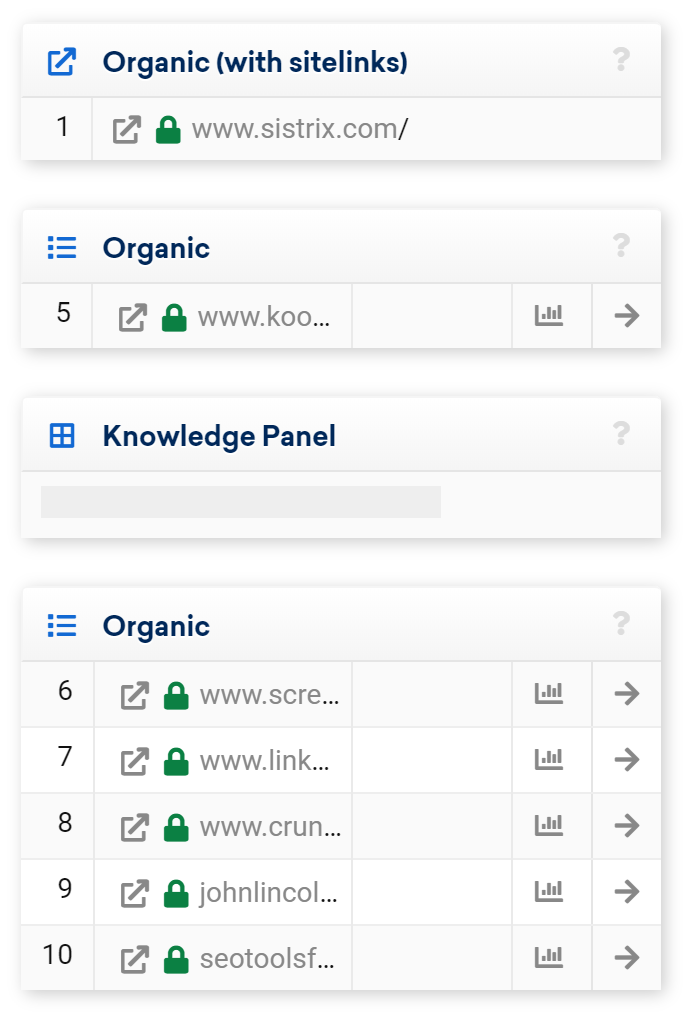The Google SERPs are becoming increasingly diverse. In order to address the reality of numerous new result types, we have adapted and improved our detection of the SERPs.
Since Friday, March 27th, 2020, we have switched all SERPs analysis, in all countries, to the new system with improved detection of search results types in the SERP. Both mobile and desktop data sets are available in the new format.
Identification of all search result types
The toolbox recognises all search result types that Google regularly delivers in the search results. At the moment there are 43 different types. We also recognise the content of most of these result types: displayed URLs, snippets, photos, videos and much more. Some search types, like the Knowledge Panel, contain very dynamic and frequently changing content. In these cases we do not examine the content itself, but the number and position of different content types. We mark this in the toolbox with a grey box. An example from the UK, using the mobile SERP is “home improvement store”
Organic results are counted as before
There are no changes to the way organic Google results are handled, with the exception of sitelinks (see the following paragraph). Most of the search result types now evaluated do not displace classic organic hits but are shown in addition to them. The types that displace an organic result have already been considered as organic hits in the Toolbox.
Evaluation of SERPs with Sitelinks

Depending on the number of sitelinks displayed, search results with sitelinks, according to Google’s understanding, occupy between 2 and 4 organic positions on the first result page. Until now, we have placed the resulting gap in positions at the end of the first hit page, so that, for example, positions from 1 to 7 have been counted continuously. Now we’re going to show this gap where it happens: right after the result with sitelinks. This will continue to have the organic position 1, but the following hits will then have (for example) positions 4 to 10. In our opinion, the removal of positions 2 and 3 corresponds more to the click behaviour in the SERPs than the previous handling of sitelinks.
Rankings, not keywords
Up to now, we have used the number of different keywords as a key figure in many places in the toolbox. We will continue this key figure for historical comparability, but will replace it with the number of rankings in most places.
The difference between these two key figures: with the number of different keywords, we only measure each keyword once per domain. Even if the domain ranked more than once for this keyword, the keyword is only counted once. In terms of the number of rankings, we count each ranking of the domain. For example, if a domain for the brand name can be found three times, three occurrences are counted.
We believe that the number of rankings of a domain is a better representation of the relevance in the search results in most cases. In addition, domains are displayed more often than previously in the search results due to the large number of different types of results.